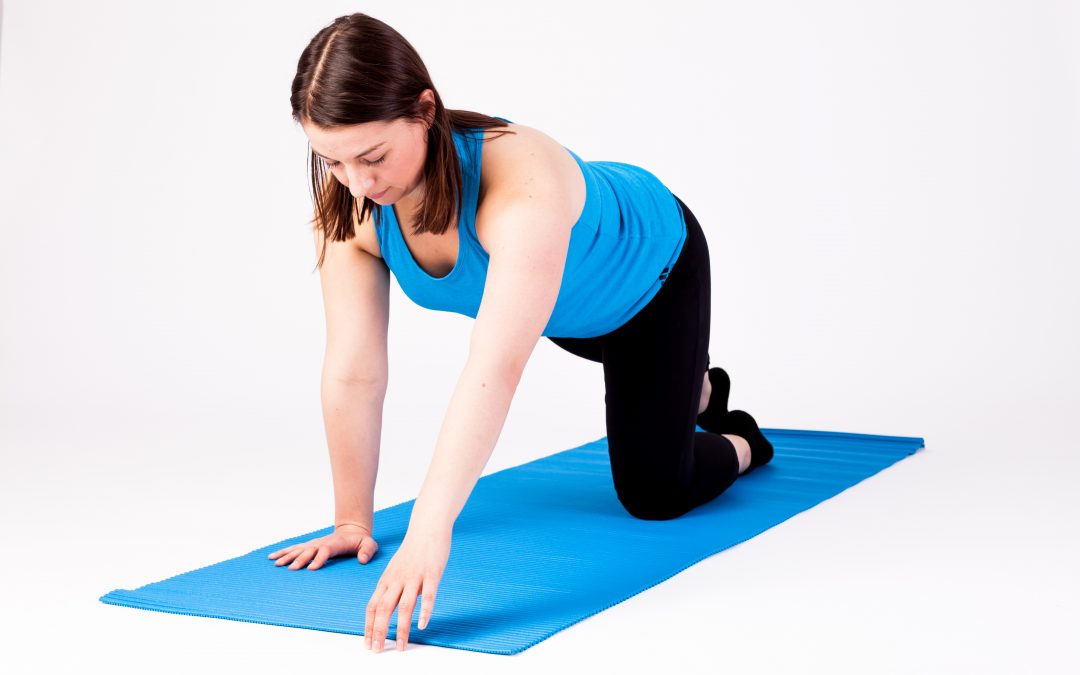Pilates exercises on all fours such at Cat Pedals and Leg Pull help to improve the flexibility and strength in your wrists and hands.
I find a lot of people struggle in this position, particularly those who have a computer based job, because of the extra load placed through the wrists. It’s not a position we usually have our wrists in and so the muscles in your forearm can over time become stiff and limit the amount of movement in the wrists and their strength.
Flexibility and strength in the wrists are important. For example if you fall over, it’s normally a hand that goes out to stop the fall. If your wrist doesn’t haven the flexibility needed it could be vulnerable to fracture.
Exercises on all fours are also weight bearing which helps to keep bones strong and are therefore particularly important for people who have osteopenia or osteoporosis.
To help reduce wrist pain in this position you could:
1. Check the weight distribution in your hands
Often I see people collapsing into their wrists, with their fingers curling away from the floor which increases the pressure in the wrists. Spread your fingers wide to distribute the weight evenly through each hand. Stretch your finger tips away and press the underside of your knuckles down into the mat. You should feel your fingers pressing down but a little space into the palm of your hand.
2. Use your upper back muscles
Stabilising the shoulder blades will help to distribute the weight through the body rather than just dumping all of your weight into the wrists and arms. Imagine a hand under your chest gently lifting up. Feel the muscles against the shoulder blades switch on with your shoulders resting flat across your back (instead of winging).
3. Hands slightly forward of shoulders
If you have tight muscles in your forearms then this can effect the range of movement at the wrist. To decrease the angle at your wrist try taking your hands slightly further forward – rather than being directly under your shoulders.
4. Rolled up towel
Place a rolled up towel or use the end of your mat underneath the heel of your hand, with your fingertips resting on the floor. Similar to having the hands slightly forward, this helps to decrease the angle at the wrist.

